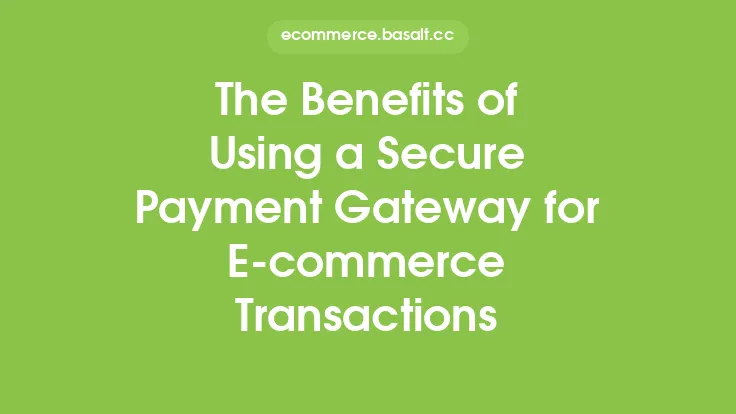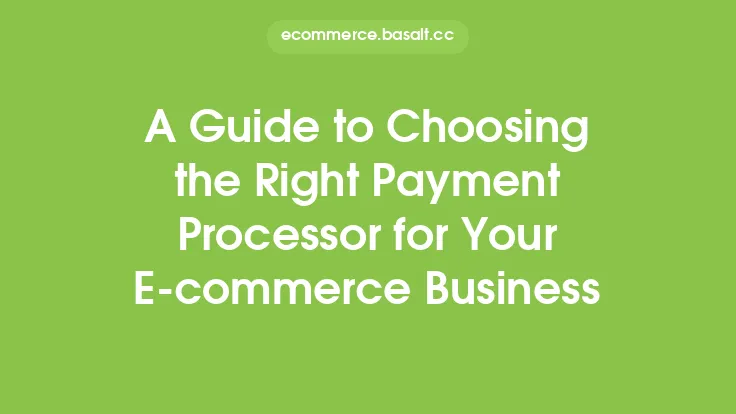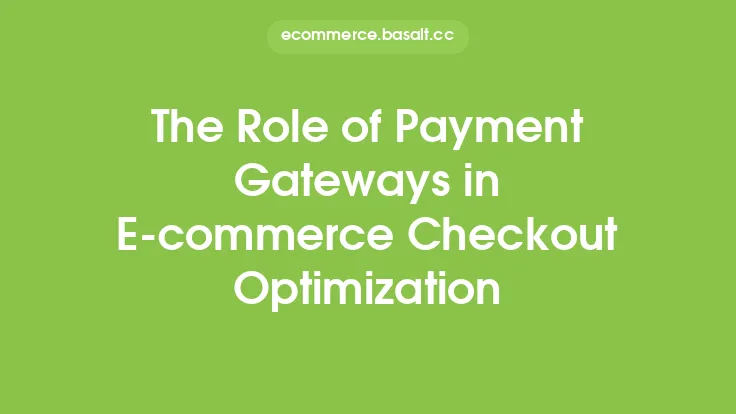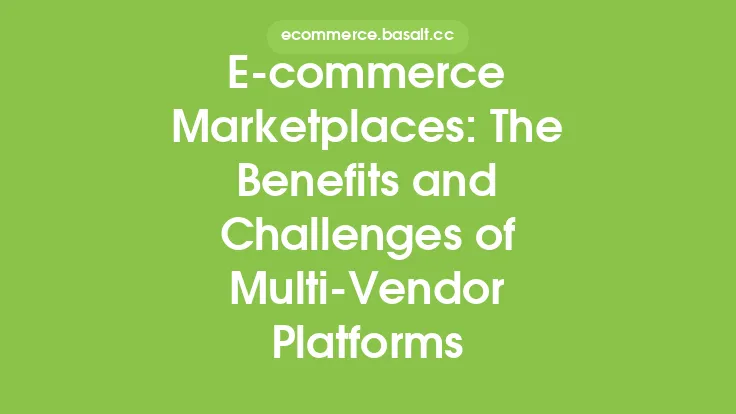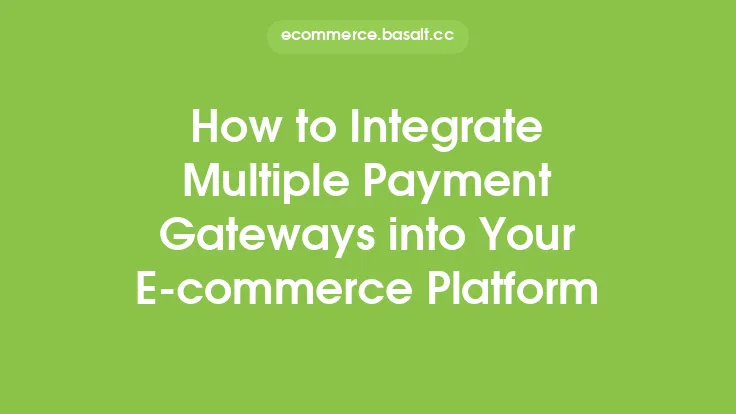In today's digital age, providing a seamless and convenient shopping experience is crucial for e-commerce businesses to stay competitive. One often overlooked aspect of this experience is the payment process. Offering multiple payment options to customers can have a significant impact on the success of an online store. By providing a range of payment methods, businesses can cater to different customer preferences, increase conversions, and ultimately drive revenue growth.
Introduction to Multiple Payment Options
Multiple payment options refer to the various ways in which customers can pay for products or services on an e-commerce website. These options can include credit cards, debit cards, PayPal, bank transfers, and alternative payment methods such as Apple Pay, Google Pay, or cryptocurrencies. By offering a range of payment options, businesses can ensure that customers have the flexibility to choose the method that best suits their needs. This can be particularly important for customers who may not have access to traditional payment methods or who prefer to use alternative payment options for security or convenience reasons.
Benefits of Offering Multiple Payment Options
There are several benefits to offering multiple payment options to customers. Firstly, it can increase conversions by reducing the number of abandoned shopping carts. When customers are given the option to pay using their preferred method, they are more likely to complete the purchase. Secondly, offering multiple payment options can improve customer satisfaction by providing a more personalized shopping experience. By catering to different customer preferences, businesses can demonstrate a commitment to customer needs and build trust with their target audience. Finally, offering multiple payment options can also help to increase average order value and customer loyalty. When customers feel that their payment needs are being met, they are more likely to return to the website and make repeat purchases.
Types of Payment Options
There are several types of payment options that businesses can offer to customers. These include:
- Credit cards: Credit cards are a popular payment method that allow customers to pay for products or services online.
- Debit cards: Debit cards are another common payment method that allow customers to pay for products or services online.
- PayPal: PayPal is a digital payment method that allows customers to pay for products or services online without having to enter their credit card details.
- Bank transfers: Bank transfers allow customers to pay for products or services online by transferring funds directly from their bank account.
- Alternative payment methods: Alternative payment methods such as Apple Pay, Google Pay, or cryptocurrencies are becoming increasingly popular and allow customers to pay for products or services online using their mobile device or digital wallet.
Implementing Multiple Payment Options
Implementing multiple payment options can be a straightforward process for businesses. The first step is to research and select a payment gateway that supports multiple payment methods. The payment gateway should be secure, reliable, and easy to integrate with the e-commerce website. Once the payment gateway has been selected, businesses can begin to integrate the different payment options into their website. This may involve working with a developer or using a plugin or module to add the payment options to the website. Finally, businesses should test the payment options to ensure that they are working correctly and provide a seamless payment experience for customers.
Best Practices for Offering Multiple Payment Options
There are several best practices that businesses should follow when offering multiple payment options to customers. Firstly, businesses should ensure that the payment options are clearly displayed on the website and easy to access. This can help to reduce confusion and make it easier for customers to select their preferred payment method. Secondly, businesses should ensure that the payment options are secure and reliable. This can help to build trust with customers and reduce the risk of payment errors or fraud. Finally, businesses should regularly review and update their payment options to ensure that they are meeting the evolving needs of their customers.
Conclusion
Offering multiple payment options to customers is a crucial aspect of providing a seamless and convenient shopping experience. By providing a range of payment methods, businesses can cater to different customer preferences, increase conversions, and ultimately drive revenue growth. By understanding the benefits and types of payment options, implementing multiple payment options, and following best practices, businesses can ensure that they are providing a payment experience that meets the needs of their customers. As the e-commerce landscape continues to evolve, it is likely that the importance of offering multiple payment options will only continue to grow, making it essential for businesses to stay ahead of the curve and provide a payment experience that is flexible, secure, and convenient.
